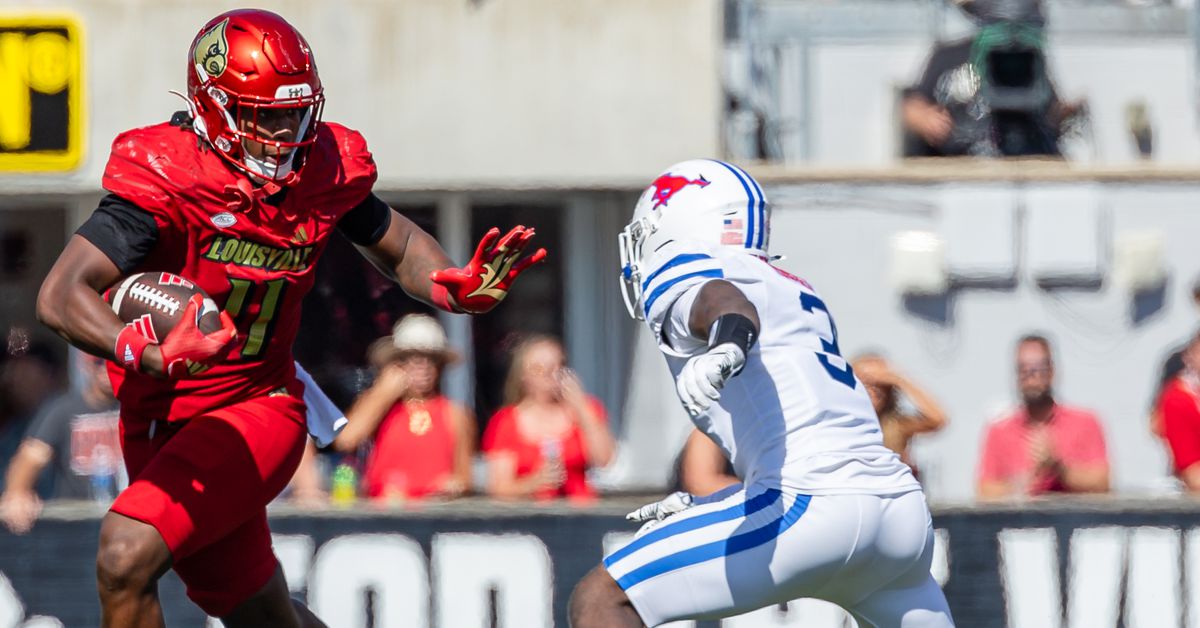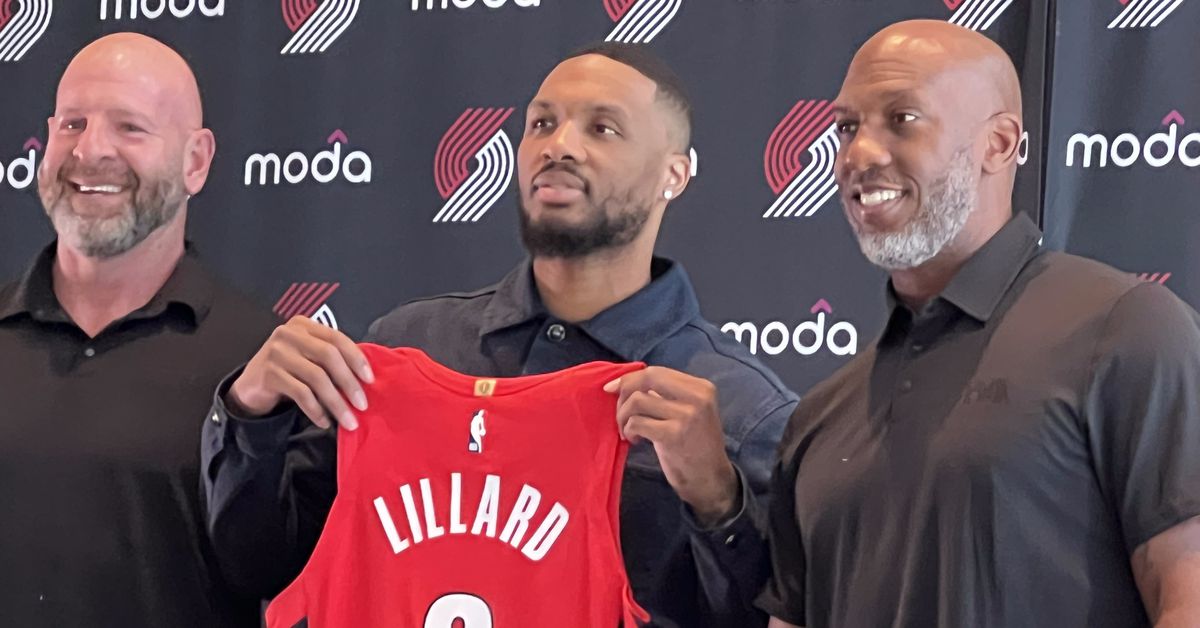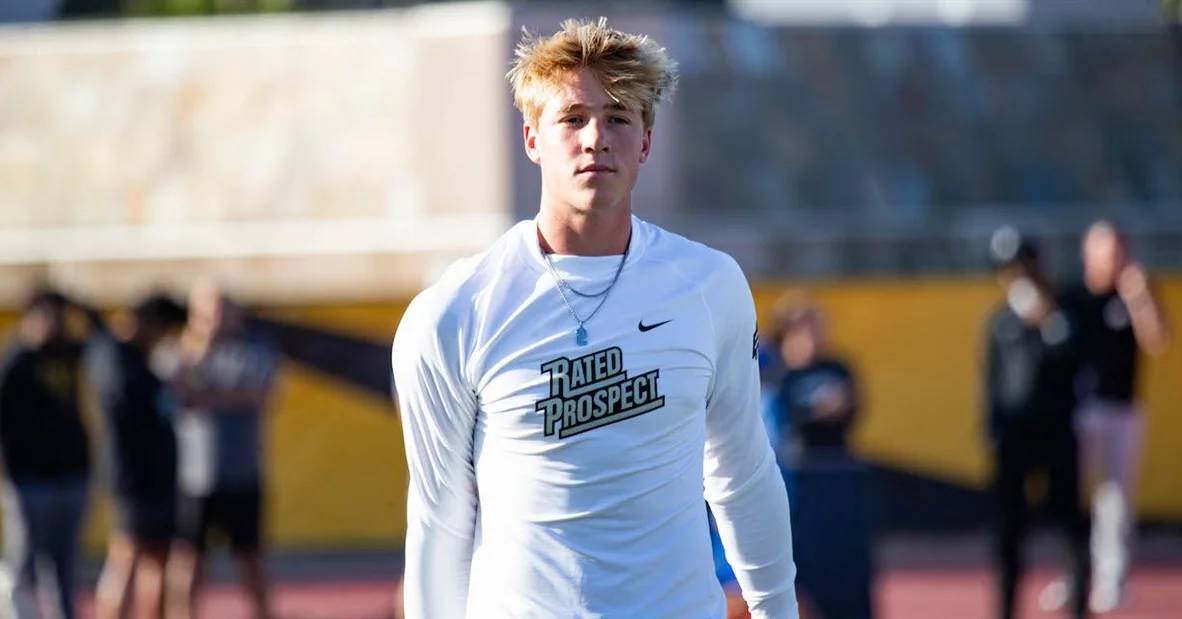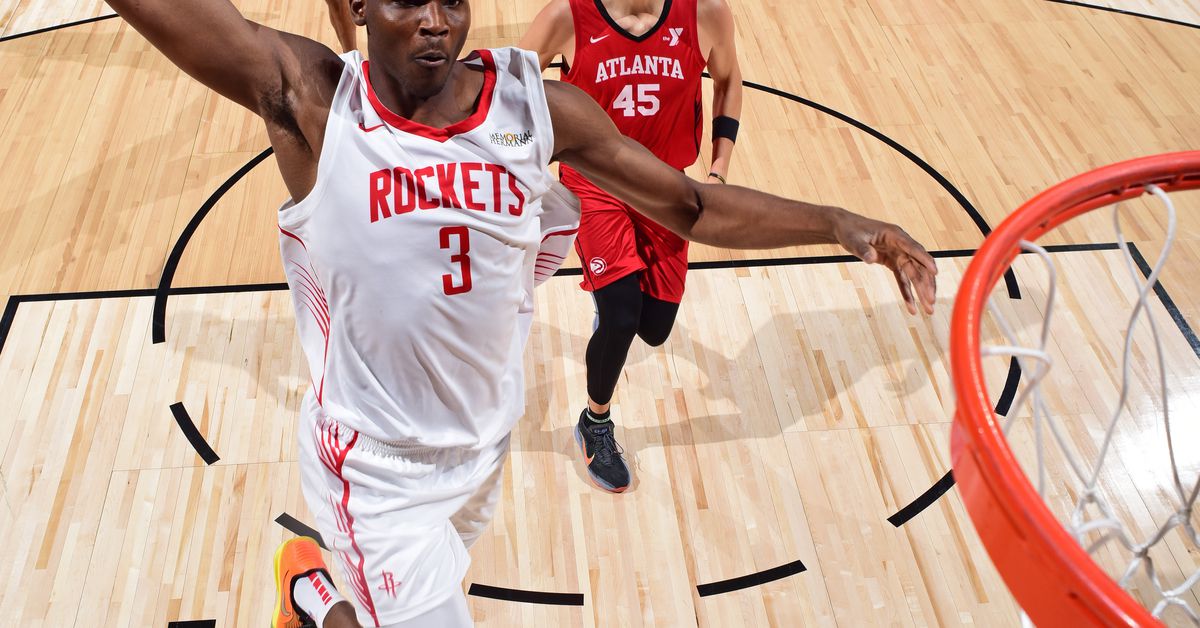Quacking the Roster: Oregon Ducks Football Tight End Transfer Jamari Johnson
Johnson was originally recruited to Louisville in 2023 as a low 4-star (.9008) in the 24/7 composite. He redshirted that year, making de minimis appearances without recording any stats in three regular season games as well as in the conference championship and bowl games which don’t count for redshirting purposes.
From the beginning of Johnson’s redshirt freshman season in 2024, he was part of a three-man rotation of tight ends that was deployed in mostly similar ways, but there were changes to how exactly each of those three were utilized over the course of the season. That evolution is central to the analysis of Johnson’s performance and will be explored below.
Just before halftime in their week 8 game against Miami (the seventh game of the season and sixth FBS opponent; Louisville had a bye in week 3 and played an FCS team in the opener), Johnson hurt his ankle on a bad landing coming down from what was a pretty nice catch and was taken off the field, missing the rest of the game. It was later announced that this was a season-ending injury. Johnson entered the transfer portal in December and committed to Oregon a week later. As a redshirt sophomore in 2025 he has three years to play three of eligibility remaining.
I acquired the film on all 13 games of Louisville’s 2024 season. I fully charted the offense in the seven games in which Johnson played (including the FCS opponent, which I normally skip), as well as two games that he missed, the week 10 game against Clemson and the bowl game against UW, due to other projects. I also used the film to create a rectified play-by-play with garbage time exclusions for the remaining four games to complete the Cardinals’ statistical profile, although I didn’t chart those.
Louisville’s offense under Coach Brohm in 2023 and 2024 (as well as his offenses at Purdue in the years before) employed 11-personnel sets about three-quarters of the time and 12-personnel for almost all of the rest, with a handful of empty or very heavy sets in edge cases. So the tight end rotation involved a complete gamut of combinations but mostly featured the starter going in alone or a backup going in alone, and then a long tail fragmented with many starter-plus-backup configurations or fullback-plus-true-TE configurations.
Of the three tight ends in the rotation, Johnson was the youngest and although his role in the offense continually grew up until his injury, at no point would I describe him as the starter at the position. It did seem clear, however, that by a certain point Johnson had displaced as the primary backup the third tight end who was a returner and 2023’s only TE target – for a couple of weeks prior to the Miami game, the rotation was pared down to just the starter and Johnson prior to garbage time.
It was also the case that Johnson had eclipsed the starter as a passing target: restricting the sample to just those meaningful snaps up until his absence, Johnson had the plurality of targets despite only having a one-third share of cumulative reps. Johnson’s per-target statistical production and per-play blocking performance also exceeded the starter’s in every category I track during that time; full analysis and discussion of the limitations of these data are below.
In short, Johnson was on track to take over the position sooner or later, and it seems that the only thing that kept him from doing so was an unfortunate injury. However, the missed time leaves unresolved questions about the trajectory of his development and prevents a more granular analysis, and so there’s more speculation involved with Johnson than many transfers.
What immediately stands out from Johnson’s film is his athletic route running and excellent hands which produce a huge effective catch radius. I don’t have a single drop on my tally sheet and just one target sent his way that he didn’t catch, a real tough one with two guys draped on him during a scramble drill that would have been the play of the year if he’d hauled it in. His quarterback, former Duck Tyler Shough, praised Johnson’s hands in and outside of his frame as well as his consistency as a target. In the games up through his injury, Johnson’s big play ability was behind only their two starting outside receivers (one of whom is a likely first round draft pick next month, Alabama transfer Ja’Corey Brooks) and significantly ahead of the other five most heavily targeted pass-catchers, including the starting tight end. Some examples:
(Reminder – you can use the button in the lower right corner to control playback speed)
- :00 – Johnson is the in-line tight end in jersey #11, as in all clips. The defense is in man, the boundary safety gets the switch call to take the second tight end who went in motion while the field safety flips over to the back and the boundary ILB is spying, so there’s no confusion at all, the backer with the big cushion has Johnson and he just gets cooked. Shough’s mechanics are a little lazy here and the ball’s underthrown — it would have been better to put this deeper and to his back shoulder — so the backer has time to catch up on Johnson’s adjustment. Johnson uses his big body to box him out and fight off the break-up attempt.
- :31 – This RB wheel with a slot crossing under is a Brohm staple but the defense saw it coming and takes it away. That defensive choice leaves a gap for Johnson to fill on the 10-yard in-cut but he has to sell it first with a hard outside move (good and physical against the nickel who’d been handsy all game), and Shough shows a lot of confidence in Johnson’s hands with his ball placement away from the defense. Nice catch outside his frame.
- :48 – Johnson’s the H-back running the wheel against man with the slot going under and the back going out creating a three-way rub. Good footwork as Johnson navigates the traffic and then fights off the backer grabbing at him as he gets past, and a very smooth hands catch then tuck for security as he falls forward through the tackle to maximize the gain.
- 1:12 – Here all four tight ends are on the field and the defense is expecting a run, and they just forget about Johnson releasing to run the umpire’s toes. Good overhand catch and he doesn’t let it get to his body despite the moving frame of reference and the excitement of his first college touchdown.
While Johnson’s releases into the pattern were a fairly even split between intermediate-to-deep routes downfield vs short outlet options and screens, he was twice as likely to be actually targeted in the latter category as the former. To some extent this reflects the unfortunate skew in the data that comes from beginning the year in last place, so to speak, within his position group and then, just as his ability to stretch the field vertically was being recognized, his season was cut short by injury. I suspect that if Johnson hadn’t gotten hurt the downfield target proportion would have continued to grow and the ratio would have evened out.
We’re left to speculate on the question, sadly, and what film does exist to review is oriented towards shorter catches. The tape is quite promising here too, showing the same great hands and equally adroit, if naturally different, route-running ability in understanding how his position on the field relates to the defense compared his deeper role in downfield patterns. Some examples:
- :00 – The defense is showing blitz but backs off. Johnson waits a beat to verify then releases to the opposite hash as the checkdown, which was his basic assignment much of the time in the early part of the season. Shough’s in a bit of trouble and finds Johnson floating deeper into the softer zone defense as the backer and corner have moved inside on Shough’s scramble. No time to switch the ball to the outside arm, so he shields it with his body to take the hit.
- :18 – The other H-back is staying in so no waiting on this play, Johnson is right out to the flat and looking at Shough the whole way. He adjusts on the ball and is immediately into taking on the corner to make this a 9-yd gain out of a play breakdown.
- :26 – Normally the defense tackles the ballcarrier to prevent the 1st down.
- :32 – I thought it was weird that we were 20 quarters of football into the season in an offense with multiple TEs before Brohm called Y-curl but here’s the first time. Johnson spins the ball away from the nickel and drags him and the backer across the line to gain, getting awarded a 1st down.
Johnson’s athleticism and big frame let him consistently generate yards after the catch, which was important for how frequently he was getting short air-yard throws. In the games up through his injury, Johnson’s per-opportunity YAC rate on my tally sheet was the second highest among all the Cardinals’ pass-catchers, behind only starting outside receiver #0 WR Bell (the primary beneficiary of the catch-and-run routes integral to Brohm’s scheme; the reader may recall Rondale Moore electrifying the country with these in 2018). There’s a quite a variety of advanced skills on display from Johnson here that was impressive to see from a freshman, from burst to physicality to defensive manipulation. Some examples:
- :00 – Johnson is meant to bluff the outside backer but the LG is not meant to whiff on the crashing inside backer, so this is a bumpier path to the RPO toss than it was drawn up, but Johnson comes out of it with his head up and hands out for the ball. He’s got it put away – outside arm – before he turns downfield. The corner is controlling the sideline so cutting back inside is just as valid as trying to race the backside DB outside, and I like the stop move he puts on the guy, just needs to keep his balance afterwards.
- :17 – The defense loses Johnson running this outside-in screen, and in addition to his speed and balance down the sideline what’s really impressive is his reach back across the neutral zone after having to redirect around the d-lineman.
- :42 – The emergency throw is high as Shough is under pressure from the blitz, but Johnson only goes up as high as he needs to in order to get it and is quickly back on his feet with the ball secured away from the defense to maximize the downfield gain.
- 1:01 – This RPO triple option should look familiar to Oregon fans. Very smooth bluff of the OLB with no momentum loss, and catch with his weight already leaning into the downfield turn. That’s what lets him get around the corner to beat the safety firing from high and make the line to gain instead of being stopped for just six yards or so (and if the WR could have maintained his block, it’s a TD).
Analyzing Johnson’s statistical performance requires unpacking how the entire unit was used and contextualizing the changes over the season, as well as acknowledging the small window of data we have for making projections and comparisons.
The two other tight ends in the rotation with Johnson in 2024 were new transfer Mark Redman and returner #85 TE Kurisky. Redman had started his career at UW in 2020 but never really saw the field there, then transferred to San Diego State where he was the Aztecs’ starter and primary producer at TE in 2022 and 2023. Kurisky was converted from an OLB his true freshman year in 2022 and played sparingly behind starter Marshon Ford, then when Ford departed along with the old staff, Kurisky became Louisville’s only TE target in 2023 for Brohm’s first season, although he still wasn’t used very much.
There were two others worth mentioning for their presence on the roster, film clips, and statistical analysis, although their usage was different from the other three – #45 TE Martin, who’s better understood as a fullback, and #97 TE Sylvester who’s not a tight end at all but actually an offensive lineman moonlighting in an eligible jersey for certain jumbo sets (his normal jersey is #70). In their entire careers they have only a handful of touches and most are gadget plays. Unlike the “true” TE trio — Johnson, Kurisky, and Redman – the usage of Martin and Sylvester stayed the same throughout the season.
Redman would comfortably be described as the starter for the entire season, which made sense given his seniority and years of starting production at SDSU. Kurisky, however, seems to have been thrust into the job by some mismanagement of the unit by the previous staff and what seems like a portal miss when Brohm first arrived in 2023. So it’s no surprise that Kurisky’s pass targets essentially vanished with Redman and Johnson on board in 2024, nor that a player as talented as Johnson relieved him of his remaining role as a blocker in short order as well (although later he got a moment to shine – Redman also missed some time after Johnson’s injury and Louisville brought Kurisky back off the bench, and he caught the game-winning touchdown in their comeback against BC).
The dataset is much too limited for a quality cohort analysis of the entire offense with and without Johnson, or for a situational analysis of Johnson’s performance in different down & distances or other contexts. What remains is a simple per-target comparison between Johnson and Redman which has adequate validity given their similar pass pattern utilization, with the caveat that the FCS data need to be included for sample size reasons and there’s some shifting of the proportions over the course of the sample.
Here’s how Johnson performed as a passing target compared to Redman on a per-target basis, only considering the targets for both through the first half of week 8 (when Johnson was injured) to control for utilization. Both performed well, but it was clear that Johnson was edging Redman out and this was contributing to the growth in his target frequency and the shift to Johnson’s use as a downfield weapon, not just a short passing outlet:
:no_upscale()/cdn.vox-cdn.com/uploads/chorus_asset/file/25898949/Louisville_TE_Targets.png)
For blocking evaluation there’s more to go on and more analyses can be done – Kurisky and the fullback Martin can be included in the comparison as well, and in addition to simple run and pass blocking grades, play success rate differentials can be examined with good confidence intervals as well.
Here are the run and pass splits, with the tight ends’ blocking grades as well as the likelihood that a play would succeed given the down & distance if he were blocking that play (again, for experimental control, only the plays through the first half of week 8 are considered):
:no_upscale()/cdn.vox-cdn.com/uploads/chorus_asset/file/25898947/Louisville_TE_Blocking.png)
Johnson’s superior size and physicality was already winning out over the rest of the unit, even as a redshirt freshman compared to veterans. He was especially effective at run blocking, where although he didn’t yet have the same technical polish as his older teammates, his mobility on slice blocks and in split-flow complemented Brohm’s zone run scheme well. The only area where any blockers had him beat out at all was in rush play success rate, which simply had to do with Martin and Kurisky subbing in for short-yardage pile pushes and QB sneaks with intrinsically high efficiency. Johnson also had fairly good grades helping the offensive line in dropback pass protection, blitz pickups, and in the variety of screens in Louisville’s offense, though there’s more room for improvement in that department.
Here’s a representative sample of Johnson’s run blocking:
- :00 – Watch the footwork from Johnson here as he opens up this C-gap run by mauling the outside backer – he first steps inside to gain leverage then turns and continues to drive his legs through the contact to keep the back clean.
- :07 – Johnson’s on the top of the screen, going against a DB in press who’s probably expecting him to release on a passing play. Instead he gets more run blocking than he can handle, and note the adjustments Johnson is making as the DB fights to get free, finally letting go before he risks a holding flag.
- :21 – This is a designed press-and-bounce run, with Johnson going in motion pre-snap then lead blocking downfield. The patience squaring up with the DB is a good touch, waiting for him to make a move on the back to gain leverage and then forcing him outside so there’s a clear path to the endzone.
- :37 – The DL is really whipping the OL on this play, with the stunt tripping up the left side, the right side whiffing on both their assignments, and the nose tackle blowing past the center. I doubt it was by design, but Johnson turns his slice block into a forearm shiver of the nose and knocking him straight back across the line of scrimmage, preventing the TFL and giving the RB the space to improvise.
Here are some examples of problem areas for Johnson to work on in pass and screen blocking:
- :00 – All-out blitz here, the pickup strategy seems to have the RB and Johnson as the H-back switching gaps which is fine, Johnson knows he has the MIKE coming in. He’s just too high in the pocket and isn’t in control of the angle of attack, and winds up trying to lunge to the side which never works. He needs to remain at depth and shuffle over with square shoulders to take the hit with a firm base. Johnson’s hardly the worst offender here; Shough makes a miracle heave despite the entire pocket exploding.
- :18 – This is one of the rare weird gadget plays for Martin for a 4th down attempt; this isn’t a screen pass, it’s caught as it’s meant to be (well, not exactly, Shough shouldn’t put it on his shoelaces) well beyond the line of scrimmage. Ignore all of that, I selected it because Johnson could have been flagged for offensive pass interference – he’s initiating contact with the defender who was trying to get to Martin, which is only legal on a run or screen. There’s a rub concept built into this, that’s why there’s three TEs and the back bunched to the boundary, but Johnson needs to sell it better to avoid a penalty risk by turning a shoulder and running from the contact, not further into it.
- :33 – Frankly, this is on the playcaller, the timing on this is pretty tough if the blocker has to watch the ball because he can’t hear the snap count on the road in a loud stadium (although, they’re in South Bend), but still Johnson can’t be this late when he has the key block.
- :39 – This is an RPO so Johnson doesn’t know if he’s run- or pass-blocking, but it doesn’t matter for his technique here – he shouldn’t be stepping forward on an edge, he should gain depth and control the angle. Losing control like this means if it hadn’t been a quick throw the QB would have been in trouble.
And some examples showing Johnson’s high potential as a blocker in the passing game:
- :00 – Jailhouse blitz, but for Johnson’s assignment it’s a straightforward pass-pro rep. Excellent control through multiple attempts to disengage, with his balance always centered between his feet. The LT doesn’t do as well and Shough is threatened, but he gets the TD pass off anyway.
- :15 – This is another RPO but Johnson isn’t bluffing this time, it’s a wham to protect the QB throwing the slant. Solid hit; he has to take an extra moment to get his feet right since the RT’s are suddenly in the way from absorbing the d-lineman’s contact, but he gets it done.
- :21 – Johnson is in-line to the left of the LT on this play. All four of the d-linemen eventually get through (it was a fairly rough day for the protection against a future playoff team), but as was pretty typical, Johnson held up longer than many of the stouter o-linemen.
- :31 – Here Johnson has released on a 12-yard in-route but the defense is in appropriate coverage for the down & distance (the correct throw is the crosser but it’s short of the sticks) and the pocket is breaking down so Shough makes a run for it. Johnson improvises a block downfield that helps him convert.
Share this content:















Post Comment